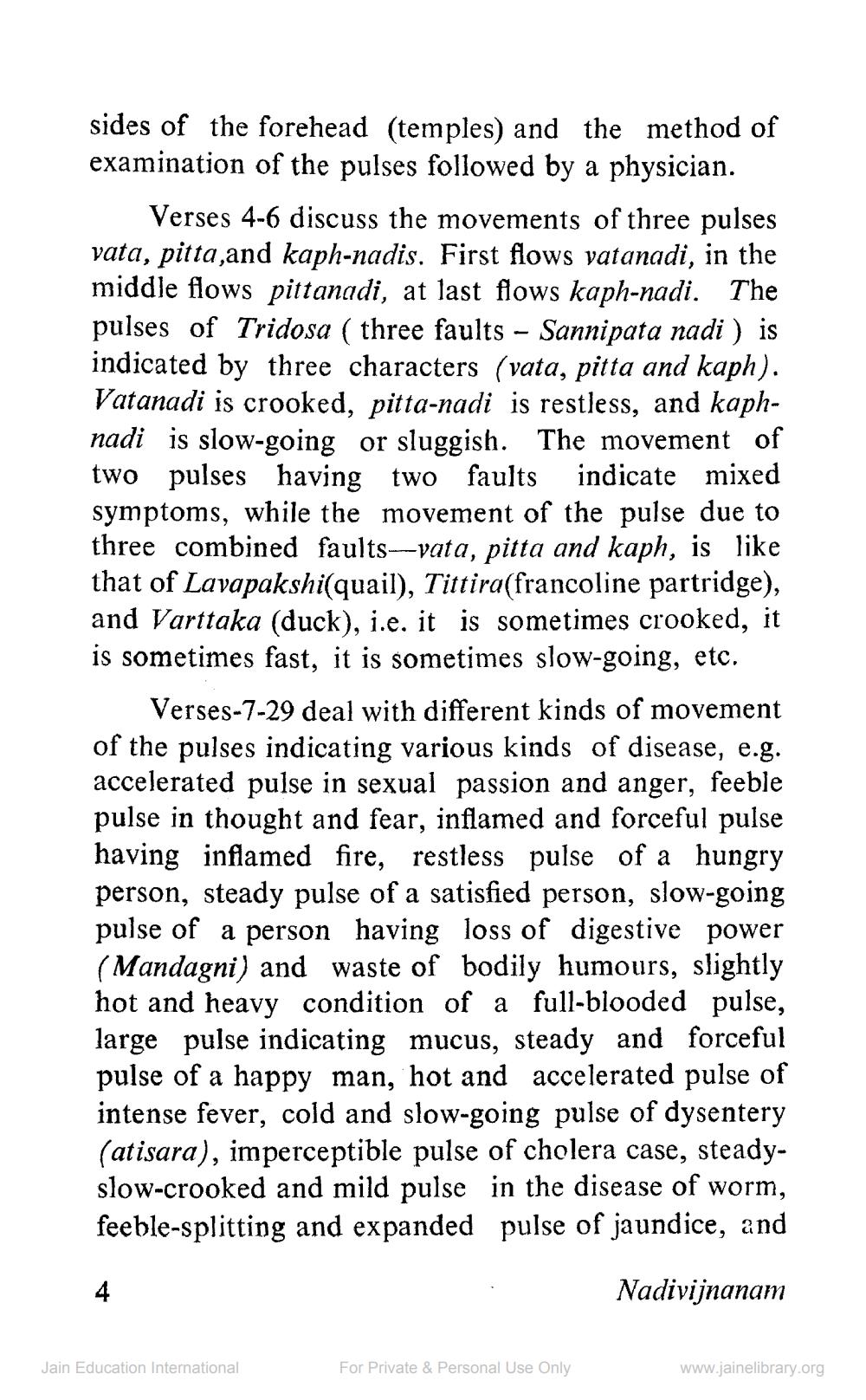________________
sides of the forehead (temples) and the method of examination of the pulses followed by a physician.
Verses 4-6 discuss the movements of three pulses vata, pitta,and kaph-nadis. First flows vatanadi, in the middle flows pittanadi, at last flows kaph-nadi. The pulses of Tridosa (three faults - Sannipata nadi) is indicated by three characters (vata, pitta and kaph). Vatanadi is crooked, pitta-nadi is restless, and kaphnadi is slow-going or sluggish. The movement of two pulses having two faults indicate mixed symptoms, while the movement of the pulse due to three combined faults-vata, pitta and kaph, is like that of Lavapakshi(quail), Tittira(francoline partridge), and Varttaka (duck), i.e. it is sometimes crooked, it is sometimes fast, it is sometimes slow-going, etc.
Verses-7-29 deal with different kinds of movement of the pulses indicating various kinds of disease, e.g. accelerated pulse in sexual passion and anger, feeble pulse in thought and fear, inflamed and forceful pulse having inflamed fire, restless pulse of a hungry person, steady pulse of a satisfied person, slow-going pulse of a person having loss of digestive power (Mandagni) and waste of bodily humours, slightly hot and heavy condition of a full-blooded pulse, large pulse indicating mucus, steady and forceful pulse of a happy man, hot and accelerated pulse of intense fever, cold and slow-going pulse of dysentery (atisara), imperceptible pulse of cholera case, steadyslow-crooked and mild pulse in the disease of worm, feeble-splitting and expanded
pulse of jaundice, and
Nadivijnanam
Jain Education International
For Private & Personal Use Only
www.jainelibrary.org




